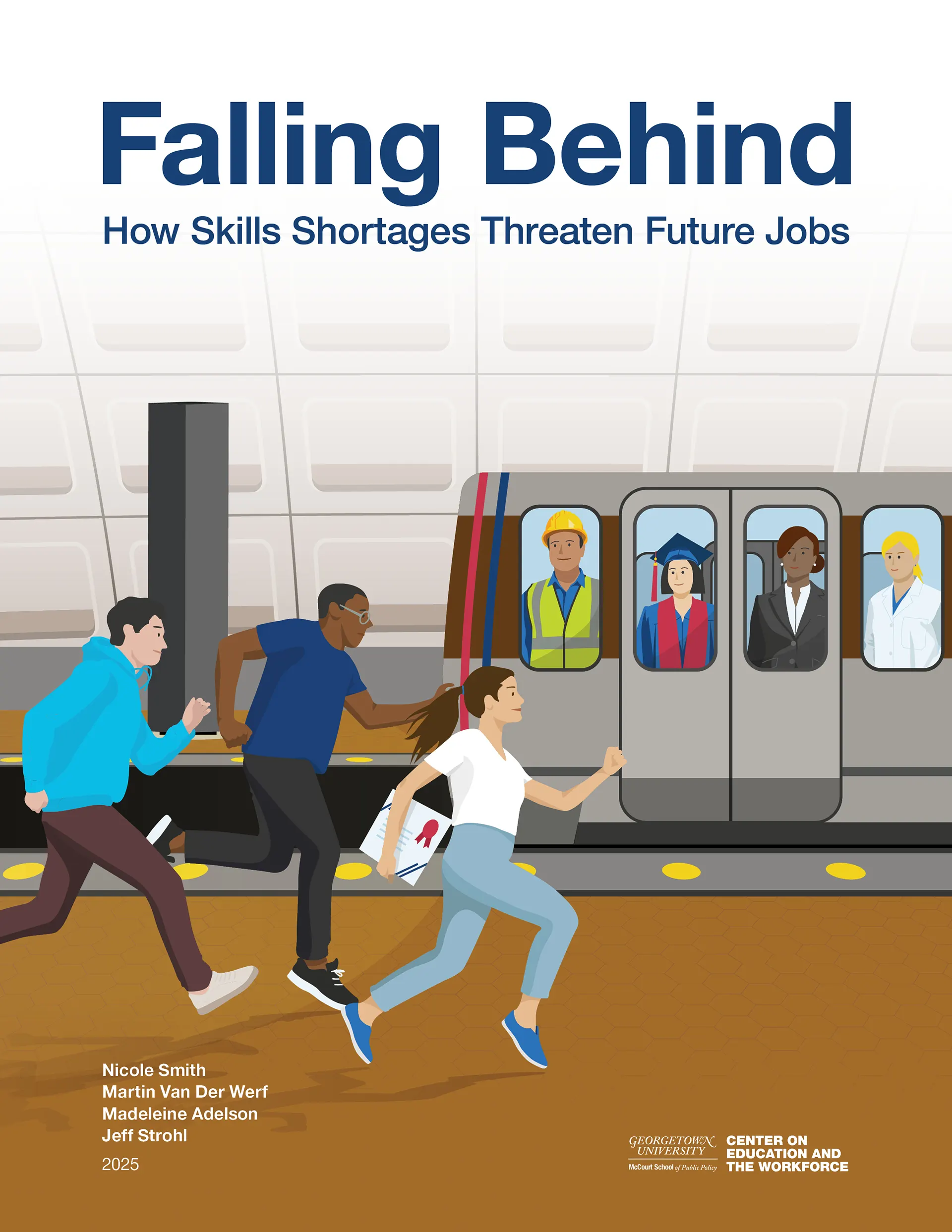Summary
The US economy is facing growing skills shortages in critical occupations due to an unmet need for workers with the postsecondary credentials associated with in-demand skills. From 2024 through 2032, 18.4 million experienced workers with postsecondary education are expected to retire, far outpacing the 13.8 million younger workers who will enter the labor market with equivalent educational qualifications. Compounding the problem, the US economy is expected to add 685,000 new jobs requiring postsecondary education and training over the same period. CEW’s research projects that the nation will need an additional 5.25 million workers with postsecondary education through 2032, 4.5 million of whom will need a bachelor’s degree or higher.
Falling Behind: How Skills Shortages Threaten Future Jobs explores the causes and magnitude of anticipated skills shortages through at least 2032. The report also examines potential strategies to address impending skills shortages and mitigate their economic impacts.
Skills Shortages Through 2032
Through 2032, the largest projected shortfall of workers at all levels of educational attainment will be in management occupations.
Source: Georgetown University Center on Education and the Workforce forecast using data from the US Census Bureau and Bureau of Labor Statistics, Current Population Survey (CPS); US Census Bureau, American Community Survey (ACS); and US Bureau of Labor Statistics, Employment Projections, 2023.
Without massive and immediate increases in educational attainment, 171 occupations of the 561 we analyzed will face skills shortages through at least 2032. The largest projected shortfall of workers at all levels of educational attainment—and the largest by far for workers with a bachelor’s degree or higher—will be in managerial and professional office occupations, particularly in management jobs (2.9 million). While not as large in magnitude, projected shortages in teaching (611,000), nursing (362,000), and engineering (210,000) occupations are a pressing concern with far-reaching implications for the nation.
Recommendations
If the skills shortage continues, it could hobble the American economy for years to come. Policymakers should pursue a combination of approaches to improve the skills profile of the workforce:
- increase the labor-force participation rate;
- address persistent attainment gaps by race/ethnicity and socioeconomic status;
- study the expansion of skills-based hiring to improve its effectiveness;
- invest in education and training for all workers who need to update their skills;
- use technology to increase worker productivity; and
- expand visa programs to prioritize immigrants with in-demand skills in jobs with more pronounced shortages.
Resources
Falling Behind: How Skills Shortages Threaten Future Jobs finds that the US needs 5.25 million additional workers with education and training beyond high school through 2032, 4.5 million of whom will need at least a bachelor’s degree.

